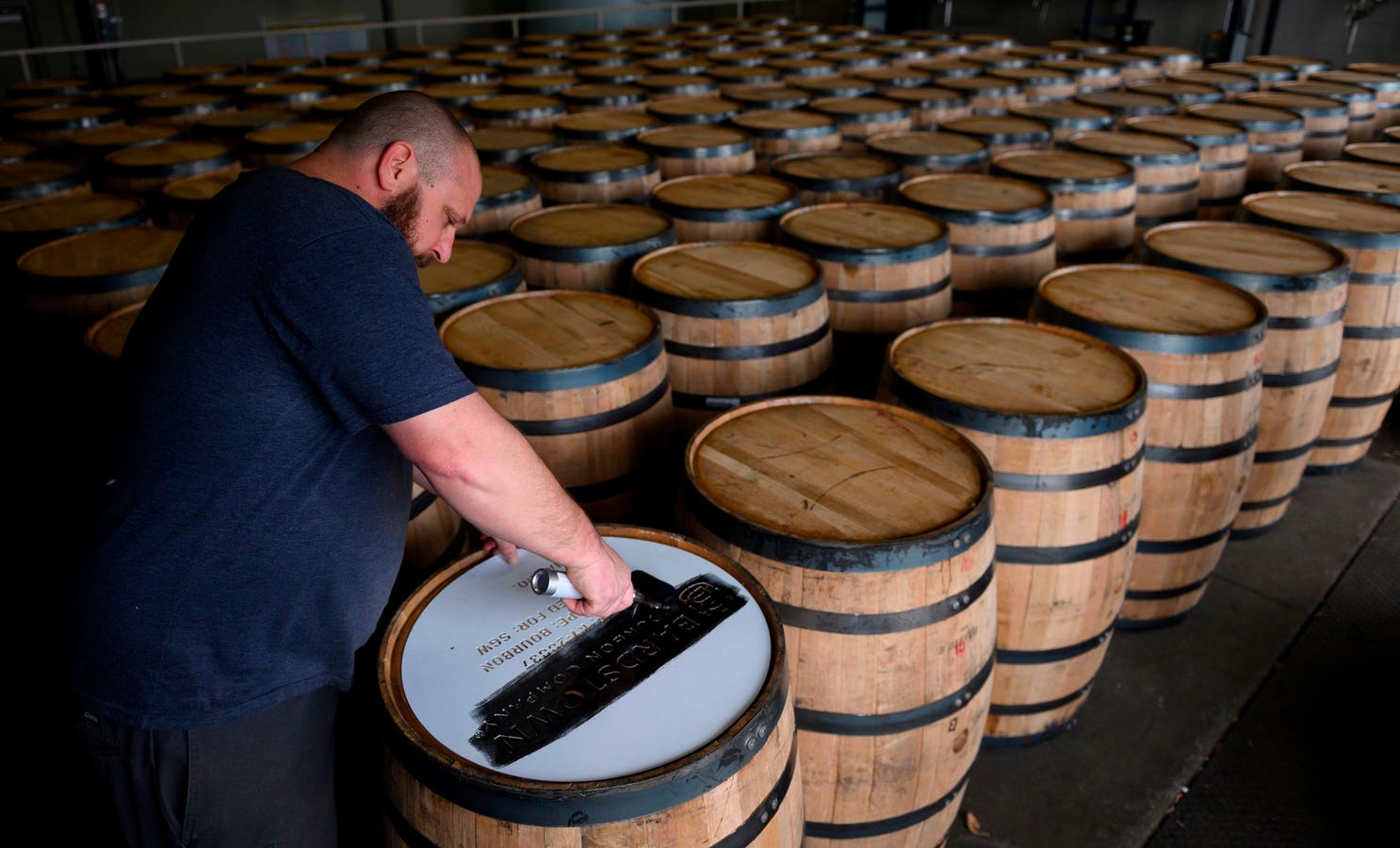American whiskey imported into the EU could soon become a lot more expensive on European shelves. This Friday a trade summit between the EU and the US will see both parties attempting to iron out a global agreement to slash lingering tariffs on goods that ship across opposite sides of the Atlantic Ocean. But if no progress is made by the end of the month, then the EU will begin taxing bourbon and rye at a rate of 50%, effective January 1st, 2024.
The overnight surge in pricing could stifle American whiskey sales in its largest export market. For distillers of the liquid it’s a reality they’ve had to contend with for more than five years. The EU first imposed a tariff on their liquid back in June of 2018, as a retaliation for tariffs which the Trump-era White House had placed on steel and aluminum imported from EU member nations.
According to data from the Distilled Spirits Council, American whisky export revenue plunged some 20% as a result of the added tax—from $552 million in 2018 to $440 million by 2021. In June of 2022, progress was made as the EU finally lifted its 25% tariff. The new looming threat would bring about a tax twice as steep. There is reason for measured optimism, however, as the West actively attempts to present a unified front against Russia and China.
“We are hopeful that an agreement comes out of this trade summit that keeps American Whiskey exports to the EU tariff-free,” says Chris Swonger, president and CEO of the Distilled Spirits Council. “The prospect of the tariffs returning is terrifying for US distillers.”
Indeed, many craft producers would have to consider pulling back product entirely from the European marketplace. “Over the last several years our sales into the EU have been sporadic,” according to Jeff Quint, founder of Cedar Ridge Distillery in Swisher, Iowa. “We are selling what we can, but we’re not heavily investing there. With the tariffs still hanging over our heads, there’s just too much risk and uncertainty.”
And all that risk and uncertainty is preventing smaller distilleries from growing. Which, in turn, has an outsized impact on domestic agriculture. In 2022, 2.73 billion pounds of grains were used to produce whiskey, brandy, rum, gin, and vodka across the 50 states. That figure has climbed 33% over the last decade.
“If tariffs are reinstituted, to the degree proposed, it will double our costs to remain in certain markets, creating an overwhelming financial burden to remain competitive,” observes Sonat Birnecker Hart, co-founder of Koval Distillery in Chicago, Illinois.
A bottle of her popular Single Barrel Bourbon, which often retails for around $50, would immediately inflate to $75 on a European shelf. It’s no wonder then, that during the last round of retaliatory tariffs, US distillers of all sizes saw export contracts cancelled and distribution deals postponed, indefinitely.
On the heels of the trade summit, members of the so-called “Bourbon Caucus,” including Kentucky Congressmen Andy Barr and Morgan McGarvey have sent a signed letter to US Trade Representative Katherine Tai. In it, they urge the White House to “secure the permanent removal of tariffs on distilled spirits and wine.”
For now there remains a narrow window to get the deal done. But come October 31st, it shuts for good—as does Europe’s access to competitively-priced American whiskey.
Read the full article here





